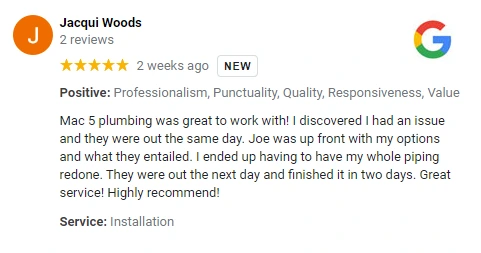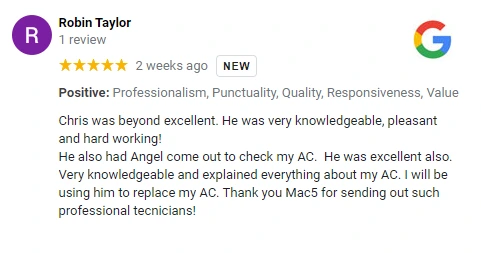Tips From Florida’s Drain Cleaning Experts
If you’ve never seen a drain or plumbing snake, it looks like a slim, long, and flexible metal cable. Drain snakes are used to unclog shower, bathtub, and sink drains.
Minor particle pollution can be flushed down the drain using drain cleaners, but stubborn clogs are more complex. Hair and soap scum clumping together within your drains may sound harmless, but enough buildup can hinder larger pipes.
Jump To Key Points:
- What Is a Drain Snake?
- Drain Augers vs. Drain Snakes
- How To Use a Drain Snake
- Drain Snaking Tips
- Drain Snake Alternatives
What Is a Drain Snake & What Does It Do?
Drain snakes dislodge clogs, but a plumber’s snake is used for clogs that are hard to reach and blockages that plungers can’t pump out.
When your drain snake uncoils, you’ll find the auger head. It’s a helix-shaped hook at the end, used to snag different particles. A clog is best removed by a thorough snaking, followed by a drain cleaner.
If drain snake, drain auger, and plumber’s snake confuse you, here’s a quick explanation.
A drain snake and a plumber’s snake are interchangeable. However, the drain snake many homeowners have are hand-operated. The opposite end of its auger head is a crank or lever. In contrast, a plumbing snake is attached to an electric power drill. Its automated feature makes drain-snaking easier and more effective.
Is a Drain Auger the Same Thing as a Drain Snake?
Yes, a drain auger is also a drain snake, yet it’s not. Don’t let that confuse you. While the differences between a drain auger and a snake are merely technical, they’re more effective in varying house regions. They serve the same purpose, just in different areas.
An auger is a multipurpose tool that drills holes in the ground and is made up of a metal rod with a helix pattern from one end up to half of its body. In essence, all drain snakes are augers. Still, there’s a technical difference.
You can snake a clogged sewer drain with a drain auger from an access point, called a drain cleanout, found outside your home. A Drain auger is wider, thicker, and longer. Its longer hoses are best for external use.
Professionals often interchange the names, but drain augers can successfully remove clogs from outdoor pipes better and don’t always fit in smaller drain openings or slimmer pipes.
If the drain snake you bought from the hardware store doesn’t fit down your bathroom drains, it’s most likely a drain auger; and a drain snake made for indoor pipes or garbage disposals are too small to effectively dislodge clogs from outdoor pipes.
Here are some of the most common augers:
The Different Types of Drain Augers
- Toilet closet auger: This drain snake resolves blockages in your toilet effectively and safely.
- Flat tape auger: It’s the same as a drain snake, except slimmer, and its auger head is flat or pointed, used to push instead of pull.
- Power auger: Professionals use this plumbing snake attached to a power drill to snake more efficiently. Professionals mostly use it because most homeowners may be intimidated by handling power tools.
- Rocket nozzle auger: Unlike most augers, the rocket nozzle works as a vessel. It’s a tube that leads high-pressure water down your drains to flush out clogs.
- Drain snake: The most commonly used auger, the drain snake, is attached to a plate with a hand lever. Its cable moves when users crank the lever to remove clogs indoors.
How To Use Plumbing Snakes Against a Clogged Drain Pipe
Either the drain snake or a plumbing snake can resolve clogs in your shower drain, and various types of other augers can help a clogged drain of all shapes and sizes. The best thing you can do about large particle blockages is pull them straight out of the drain entrance.
If you don’t have one, chances are, you’ve never used one either. If you already have one, here’s how to use it safely. Still, it’s best you call an expert instead of snaking your shower drain haphazardly.
Do It Yourself: How To Use a Drain Snake
We advise you to proceed with caution. It would be best if you didn’t use too much unnecessary force when cleaning your own drains. Feeling the clog might excite you, but don’t let your grudge get the better of you.
Remember these tips:
- Wear rubber gloves for protection.
- Choose augers with a rubber shield.
- Don’t use a plug-in near water if you’re using an automatic drill.
- Use cold water while snaking, especially if you don’t remove your kitchen sink’s P Trap.
- Gentle is best.
- Stop snaking or re-adjust its placement if you hear scraping noises.
- Follow the snaking with drain cleaner to protect drains.
- Keep old towels handy while snaking.
Drain Snaking Process
- Begin uncoiling your drain snake.
- Remove the drain cover.
- Slowly push the plumbing snake down the pipe.
- Push through the curving piece of the P trap to get to the trap arm.
- Keep pushing the drain snake gently down the trap arm or pipe.
- Stop pushing when you feel pressure or resistance from the clog.
- Start rotating the lever against its protective sheath using your other hand.
- Continue rotating with a consistent pace to catch as many clumps of hair and other debris.
- Pull out the drain snake and clear it of whatever it fished down the drain.
- Continue snaking the drain until you have successfully removed the clog.
Remember to be very careful with the process. You can damage your plumbing fixtures, requiring costly plumbing repairs. Remember to use toilet drain augers for toilets and flat tape augers for smaller lines.
Don’t force drain augers down drain lines they aren’t made for to prevent causing further issues.
Additional Drain Snaking Tips
Know Your Drain Lines
Now that you know the kinds of augers and how to use them, you should get to know the pipe you’re using one for. The drainage of your kitchen sink is a sophisticated mechanism. P traps help prevent sewer gases from contaminating the worst possible place they could in your home.
All lines are connected to the main sewer line outside, and hazardous gases may come back through your kitchen pipe due to a compromised P trap. Your kitchen’s drain pipe is connected to your home’s main sewer line.
The P Trap & Trap Arm
If you look behind the kitchen sink, you might find a plastic or metal nut. The metal nut connecting the trap arm to the main drain pipe can be loosened using an adjustable wrench for less constriction. However, if you have a PVC pipe, it may not have a nut lug attachment.
The connection sounds like a recipe for disaster, but the P Trap helps redirect sewer gases back into the main pipe instead of releasing them into your kitchen or dining area.
Don’t forget there’s a clog full of decomposing food particles in your P traps and garbage disposals. If you push drain augers too far or too hard, you can compromise the integrity of your P trap, releasing dangerous CO2 emissions up instead of being diverted into the pipeline.
Be extra gentle in snaking your P trap to avoid costly damages and hazardous injuries.
What if I Don’t Have Drain Snakes?
Not everyone has plumbing snakes at the ready, but you can make one if you already know how to use a drain snake and don’t have access to one.
What Are Good Alternatives to a Plumbing Snake?
A wire hanger makes a great alternative for removing items blocking proper water flow. An average-sized wire hanger makes a perfect instrument to reach the clog in your kitchen drains. You can reach a clog a few feet down drains by coiling two wire hangers together.
Drain Snaking Tools That Don’t Work
Don’t use tree roots. We know. We’ve read those articles. While any long tool may be plausible, anything made of wood doesn’t make a viable alternative. Makeshift tools made of organic materials may succumb to the standing water in your line and disintegrate, leaving their own particles to pile onto the clog.
If organic microparticles are clogging your drain, try using a drain cleaner instead of a drain snake.
How Do I Clean a Clogged Sewer Drain?
A clean drain is less likely to harbor a clog, offering less residue for particles to cling onto. You can prevent particles from building up by regularly cleaning your pipelines with boiling water or chemical solutions.
Commercial Drain Cleaners
Drain cleaners are a great middle-ground between plunging and snaking. They make great remedies and prevention tools.
However, some industrial solvents may be too harsh, and there are organic compounds you can make if you’re afraid of commercial ones leaving lasting effects that compromise the integrity of your fixtures.
How To Use a Homemade Drain Cleaner:
- Pour boiling water down the drain.
- Wait for it to stop steaming.
- Add in one cup of baking soda.
- Add one cup of white vinegar.
- Wait fifteen to thirty minutes.
- Turn your sink’s hot water on for a few minutes.
You can also use this organic drain cleaner after every snaking. It’s harmless, affordable, and effective.
Looking for a Reliable Plumbing Service in Florida?
If you’re tired of fixing your pipe’s repairs on your own, don’t settle for unreliable services. Call experts you can trust to handle all your plumbing needs.
Family-Owned Business: Mac 5 Services
Mac 5 Services is a family-run business that goes above and beyond to help clients resolve problems efficiently. It isn’t just business to us. We make dealing with annoying repairs personal.
Our personable office staff will guide you through all the steps in the process, ensuring you’re updated and comfortable throughout.
For a fast and stress-free service, call (321) 244-7500 today.




No Comments yet!